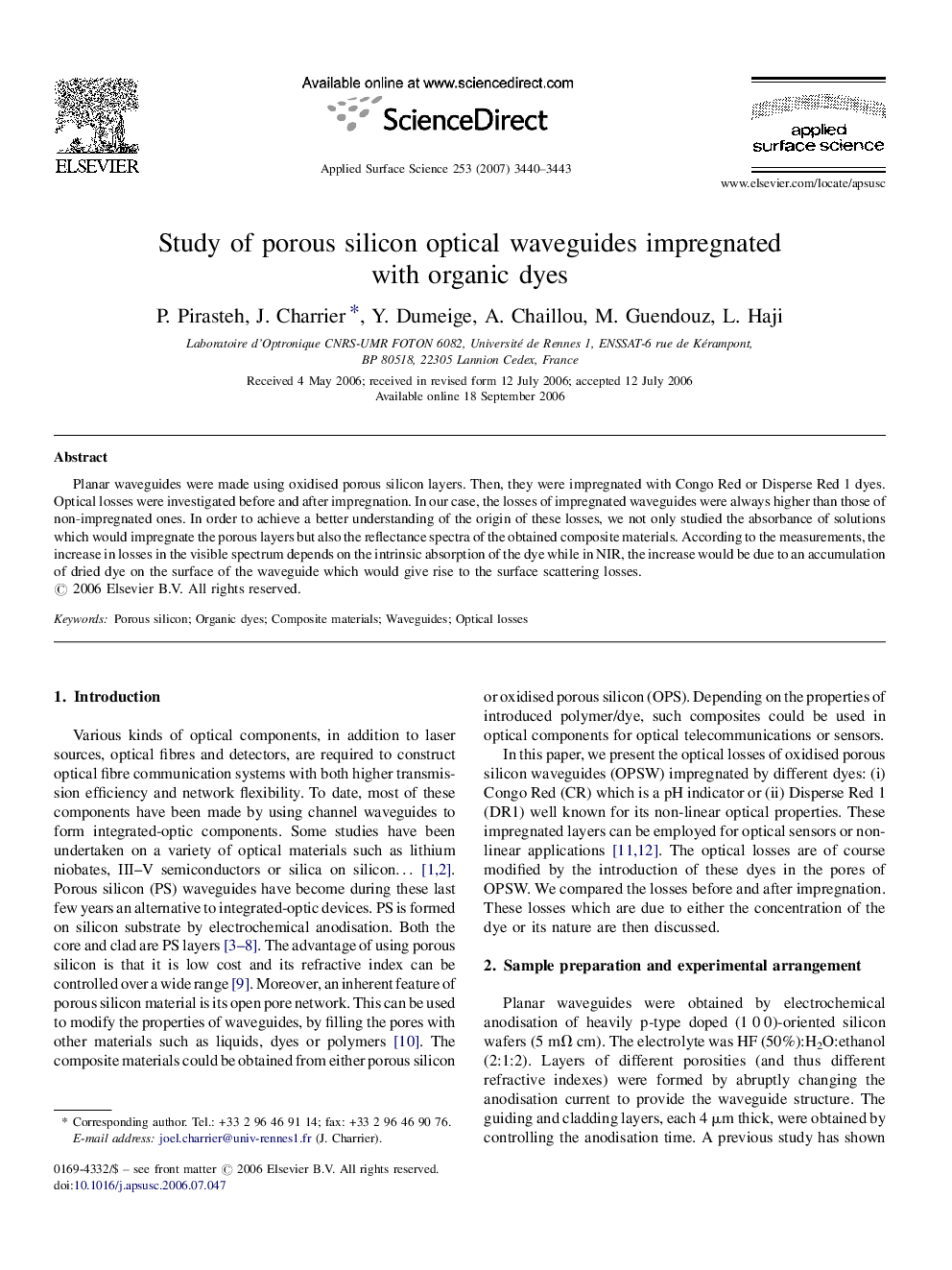| Article ID | Journal | Published Year | Pages | File Type |
|---|---|---|---|---|
| 5367449 | Applied Surface Science | 2007 | 4 Pages |
Planar waveguides were made using oxidised porous silicon layers. Then, they were impregnated with Congo Red or Disperse Red 1 dyes. Optical losses were investigated before and after impregnation. In our case, the losses of impregnated waveguides were always higher than those of non-impregnated ones. In order to achieve a better understanding of the origin of these losses, we not only studied the absorbance of solutions which would impregnate the porous layers but also the reflectance spectra of the obtained composite materials. According to the measurements, the increase in losses in the visible spectrum depends on the intrinsic absorption of the dye while in NIR, the increase would be due to an accumulation of dried dye on the surface of the waveguide which would give rise to the surface scattering losses.
